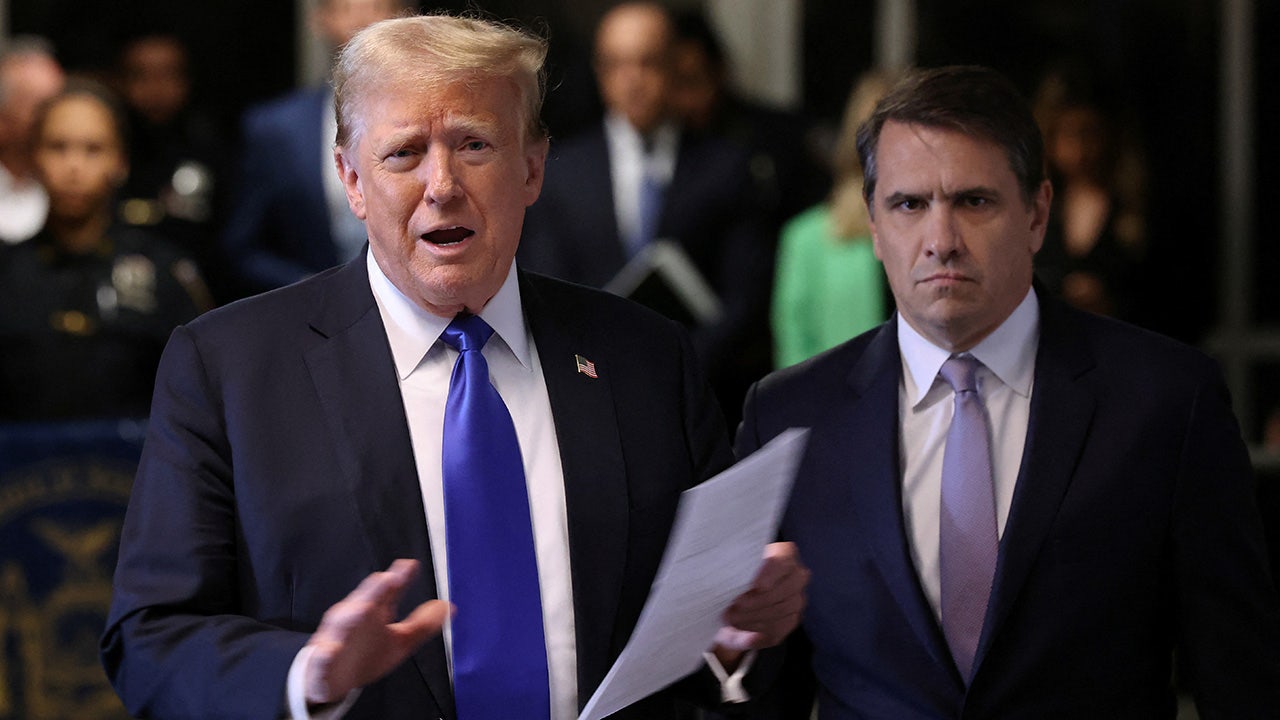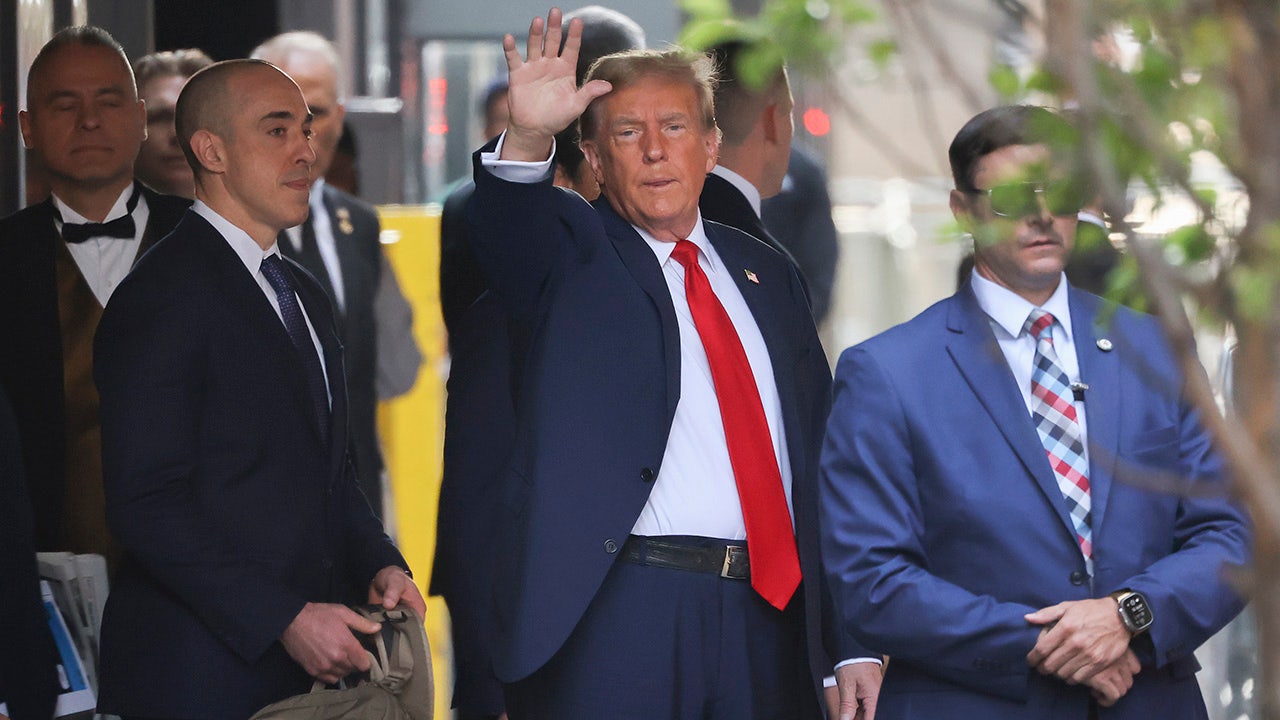Hawaii
Pittsburgh Is Hawaii's Football Team
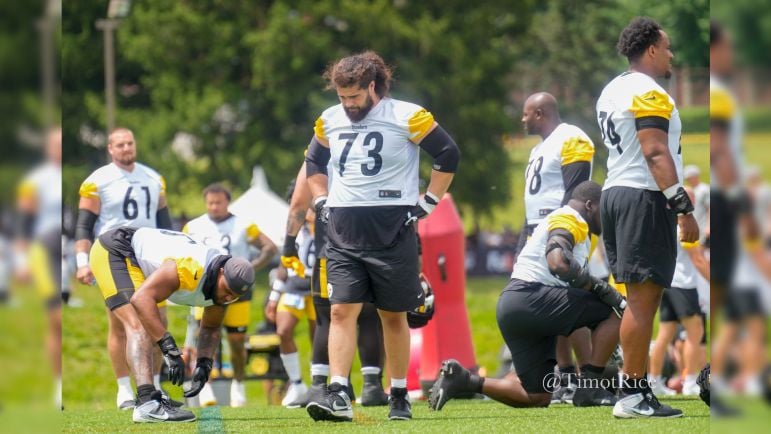
No team loves Hawaii like the Pittsburgh Steelers. Though I’m sure there hasn’t been an actual effort to find players from the island of 1.44 million, they’ve collected the largest pool of them in the league.
On the team’s 90-man roster right now sits five Hawaii natives. There’s the Herbig brothers, Nate and Nick. There’s Isaac Seumalo, Breiden Fehoko, and the newest addition, wide receiver Roman Wilson from Kihei, who attended the same high school as the Herbig’s.
Of their current 87-man roster, that means nearly six percent of them are from the island.
How does that compare to the rest of the NFL? Pro Football Reference has a list of Hawaii-born players. They show 12 of them playing in games last season. Non-Steelers include former Steeler Tyson Alualu, QB Tua Tagovailoa, and DL DeForest Buckner. Adding in Fehoko – who technically didn’t appear in a game last year but spent time on the Steelers’ 53-man roster, that’s 13 of them on rosters last season.
How about the rookie class? I don’t have an exhaustive list, but using Dane Brugler’s draft guide that lists the hometowns of hundreds of players, there were five of them. Three of them were drafted: New York Giants LB Darius Muasau, Dallas Cowboys LB Marist Liufau, and the Steelers’ Roman Wilson. One other, Tua’s brother Taulia Tagovailoa, was invited to a rookie minicamp on a tryout basis, while another, LB Zion Tupuola-Fetui, appears unsigned and uninvited to the best of my knowledge despite initial reports he was going to Carolina.
So, let’s assume 15 Hawaii-born players appear in games next year. The current ones minus Alualu, again a free agent whose career may truly be done this time, and the three drafted rookies. That means one-third of them could come from Pittsburgh should Fehoko land on the 53-man roster in some capacity.
As is my usual question, what does this matter? I offer my usual answer. Not much. But it’s a fun factoid to examine post-draft. The Steelers love their Hawaiians. And I bet Hawaii loves Pittsburgh.

Hawaii
The next great (lefty) QB from Hawaii: Jaron Keawe Sagapolutele hopes to cash in on Elite 11 Finals invite
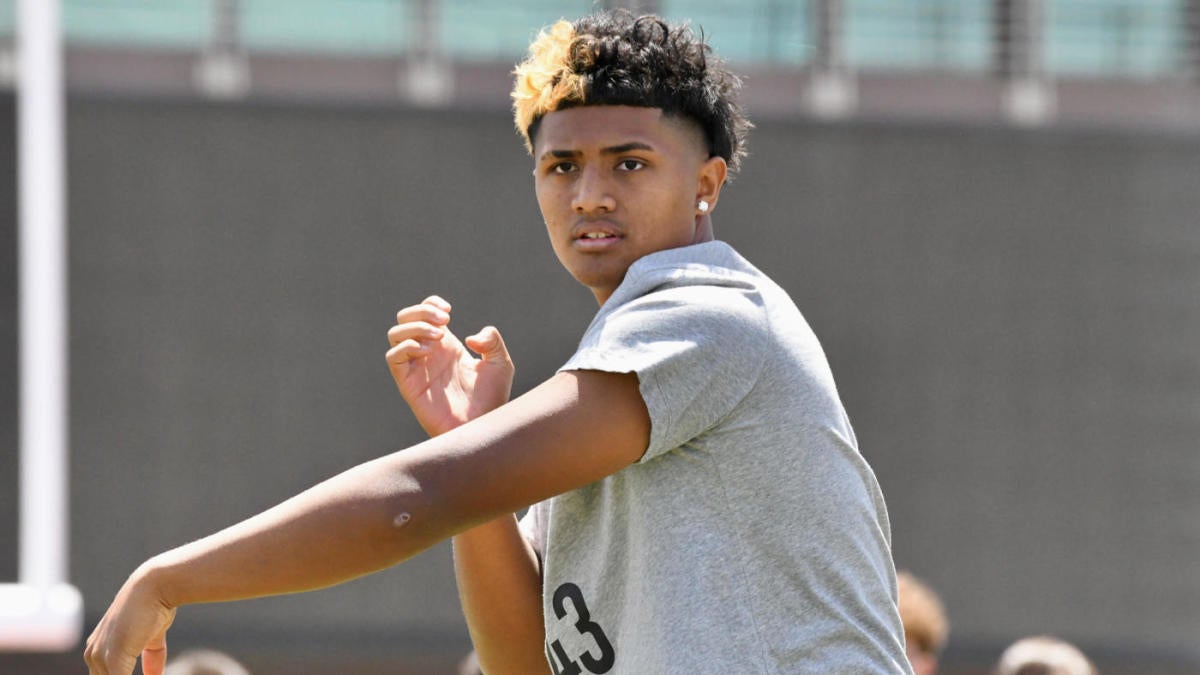
Jaron Keawe Sagapolutele is ready to carry the torch.
After seeing Tua Tagovailoa stockpile trophies at Alabama on his way to the NFL and closely studying Dillon Gabriel as he’s accumulated thousands of passing yards, first at UCF and then Oklahoma en route to Oregon, the next star left-handed quarterback from the state of Hawaii aims to follow their lead.
Sagapolutele (pronunced: SANG-ah-poh-lu-tele) is a three-star prospect from Ewa Beach (Hawaii) Campbell and is one of just two uncommitted signal callers with a ticket to the prestigious Elite 11 Finals in Los Angeles next month. Although he doesn’t possess any scholarships from schools located east of Denver, Sagapolutele ranks No. 1 among players in the Aloha State for the 2025 class, No. 26 nationally among quarterbacks, per 247Sports, and heads into the premier summer event brimming with confidence.
“Coming from Hawaii, we don’t often get these opportunities to be among a selected few,” Sagapolutele said. “The Elite 11 Finals is a huge platform. This is everything and I really want to prove that I am one of the top guys. I believe I am and hopefully I’m able to show the amount of work I have put in.”
There is a reason Sagapolutele’s self belief is high — the 6-foot-3, 205-pound gunslinger has passed for more than 7,200 yards and 68 touchdowns dating back to the start of his sophomore year. If those numbers suggest that the sport has been easy for Sagapolutele, consider that his preparation for Friday nights began when coaches allowed him to throw against high schoolers as a fifth grader.
Even when his older brother, John, was making noise as a freshman starter on varsity for renowned Punahou School on his way to signing with the hometown Rainbow Warriors, there was already significant buzz around Jaron and how the promising lefty had something special to his game.
“Hawaii is so small that, growing up, you’re always aware of the guys in front of you and those coming behind you,” said Gabriel, who was Hawaii’s Gatorade player of the year for the 2018 season. “Looking at it now Jaron has everything you want. From a physical standpoint he’s taller than me and Tua, and he can sling it just as good. You look at the person and you’re getting a genuine, authentic kid from the islands who is all about family. Who wouldn’t want a guy like that in their program?”
Campbell head coach Darren Johnson argues that his star player would have a larger national profile and more suitors if he played his high school ball on the mainland. It’s an obstacle that many others have faced, including Gabriel, who didn’t see his stock skyrocket until close to signing day when the likes of Georgia and USC all made a late charge.
“It’s a big enough accomplishment just to get other people to recognize him all the way out here,” Johnson said. “We know he can play, but college coaches just have to see him. He is going to have more offers. We know that will happen because he will turn heads.”
Tagovailoa, a former five-star who collected a boatload of blue-blood offers, also had to seize his initial opportunity when recruiters flocked to Honolulu to see him throw.
“During our process, recruiting was more word of mouth and schools didn’t travel to the islands much,” said Tagovailoa’s father, Galu. “We had the Rich Miano camp at the University of Hawaii and a lot of big schools came out, but one of the reasons why Tua got noticed was because Marcus Mariota was doing so great in college. Coaches were talking about another kid from the same high school where Marcus came from who might be just as good or even better than Marcus. That’s kind of how things got going. Recruiting is a different game now, but Jaron has special qualities, too. I watched him throw last year and the ball just pops out of his hand.”
Tagovailoa claimed MVP honors at the Elite 11 Finals in 2016. Johnson said he hopes the same stage can shine a spotlight on Sagapolutele’s abilities ahead of what should be a pivotal point in his recruitment. Only Utah State (May 31), Oregon State (June 7) and Boise State (June 13) have so far locked in Sagapolutele for official visits. Colorado has also offered, while Oregon and USC are two teams with quarterback commitments in the 2025 class which expressed interest in recent weeks.
The momentum continued to simmer this spring. Earlier this month Sagapolutele made the trek to Las Vegas where he was named Alpha Dog at the Elite 11 Regional. His performance there eventually earned him a spot in the Finals.
“It’s just natural arm talent with Jaron,” said Campbell offensive coordinator Leon Cordeiro, the father of former UH and San Jose State quarterback, and recent Seattle Seahawks free-agent signing, Chevan Cordeiro. “Most East Coast schools don’t come out here and, honestly, Jaron is better than most of the quarterbacks committed to those East Coast schools. Dillon was the same way and he didn’t get many offers until late in the process. Jaron still has a lot to work on – his footwork can get better, scheme wise he can improve on reading defenses – but his arm talent is special. Just wait until they see what he develops into in a few years.”
Hawaii’s distance from the contiguous United States, of course, is the most deterring obstacle for prospective recruits. Social media and the increased use of video have erased some hurdles, but it’s still difficult for a college coach to offer a player without getting an in-person look. And unless a prospect flies across the Pacific for events college coaches will attend, there might be only one chance per year to make that lasting impression.
“Manti Te’o, DeForest Buckner and Marcus Mariota kind of started it for us in Hawaii and helped a bunch of other guys get looks,” Gabriel said. “In the past 10 years we have really seen it grow. Colleges aren’t only going to the islands for defensive linemen, offensive linemen and linebackers anymore. It’s also about the skill positions, so the quarterbacks can definitely make an impact on drawing exposure.”
Gabriel will serve as a college counselor at the Elite 11 Finals and looks forward to interacting with the competitors. He realizes the influence he could have on the future of the position, even if that means his name eventually gets wiped from some record books.
“Jaron is probably going to break all my high school stats,” Gabriel said with a laugh. “Watching Tua do what he did gave me the juice that I could do it, too. I beat Tua’s records and Jaron is the next guy up. I still watch Hawaii football on Fridays and the important part for me is to be able to inspire Jaron and others like Kini McMillan at Mililani, just like Marcus inspired me, just like I was able to learn from McKenzie Milton both in high school and in college. That’s all I want to be for the younger guys.”
And so, in less than three weeks, an inspired Sagapolutele will walk through the terminal at Daniel K. Inouye International Airport to board his flight to LAX with one sole motivation.
“I’ll be locked in,” Sagapolutele said, “with the mindset on winning the whole thing, to show that Hawaii can compete with the mainland, just like others have before me.”
MORE: Latest on the status of 2025’s top quarterbacks as summer visits heat up
Hawaii
Honolulu's World's Safest City Accolade: Visitor Fact or Fiction?
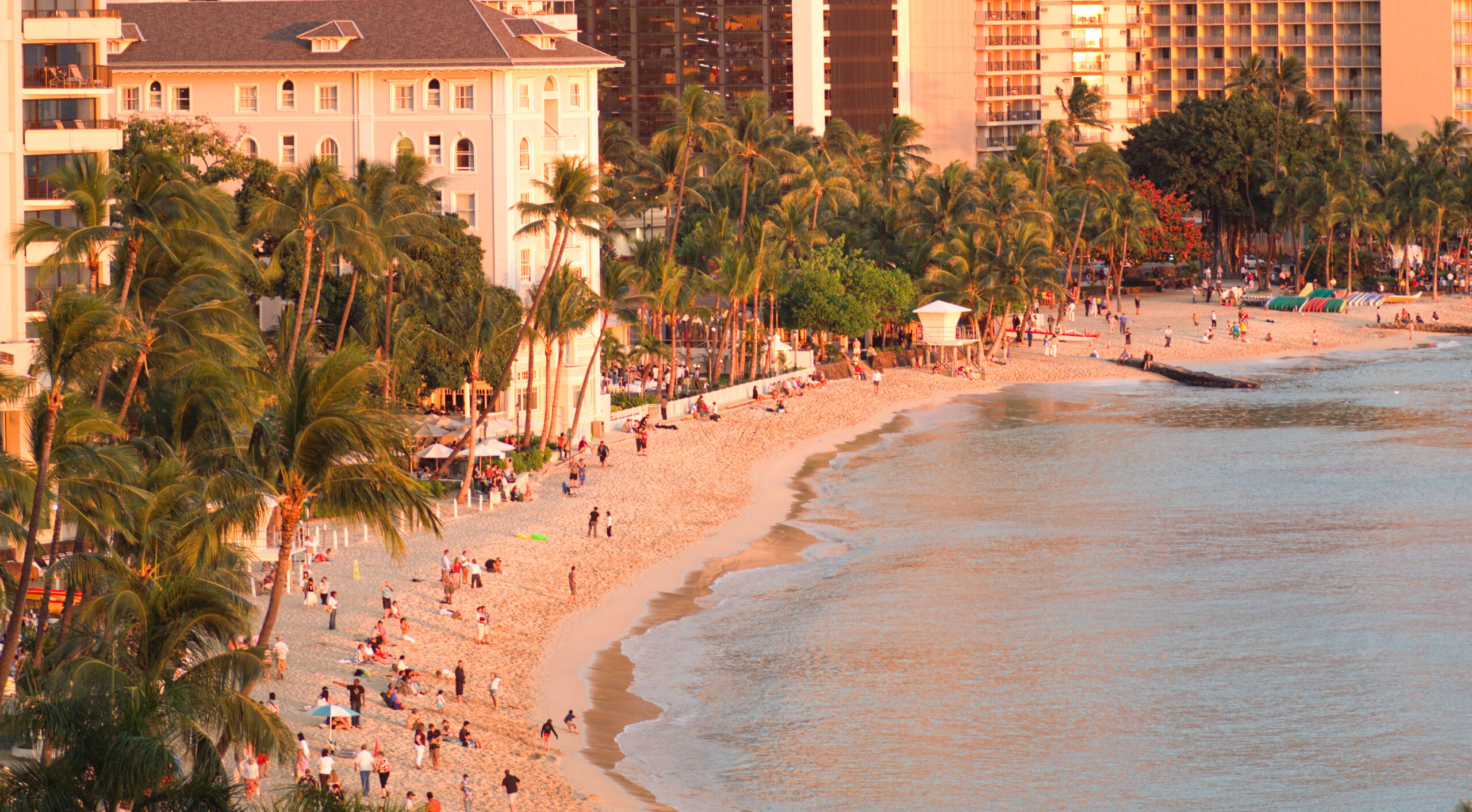
Honolulu has just been awarded the title of the “World’s Safest City” by Berkshire Hathaway’s annual Safest Destinations report. The honor was accepted by Hawaii Tourism, Mufi Hanemann, Mayor Blangiardi, and others. This recognition from Warren Buffett’s Berkshire Hathaway is based on their analysis of safety metrics ranging from health measures to crime rates. Honolulu scored high in safety for women, LGBTQ+ travelers, and travelers of color. The city was ranked 12th overall last year.
This comes on the heels of last month’s report we wrote about from Hawaii Tourism that said its own visitor survey confirmed similar ranks.
Yet, as you’ll see below, we receive countless comments that offer different points of view, and our own perceptions also don’t completely concur with either of these findings.
So does this global recognition accurately reflect the everyday reality in Honolulu, particularly from a Hawaii visitor perspective?
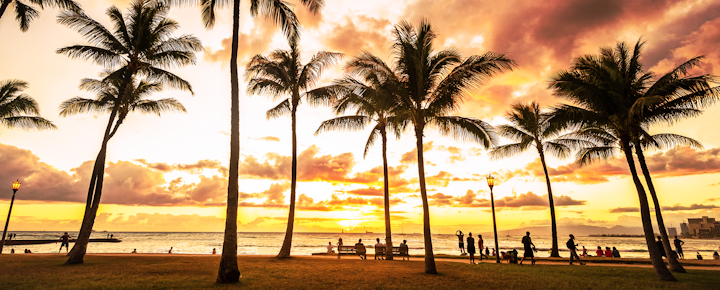
Analyzing recent Honolulu crime statistics.
The latest crime statistics from the Honolulu Police Department reveal a more nuanced situation in relation to the city’s safety landscape, which may impact tourists more directly than the trip insurance survey.
Here’s a breakdown of the year-to-date crime rates comparing 2024 with the same period in 2023, focusing on crimes most relevant to visitors:
- 👍 Theft Offenses: Overall, theft offenses have decreased by 11.6%, with significant reductions in motor vehicle thefts (-23.9%) and theft from motor vehicles (-35.9%). These figures suggest an improvement in the security of personal property, especially vehicles— a common concern for Hawaii visitors.
- 👍 Robbery: Robbery rates have seen a decrease of 20.5%, indicating a safer environment for tourists in public spaces.
- 👍Assault Offenses: While there has been a small decrease in overall assault offenses, the number of aggravated assaults has dropped by 9.6%, possibly reflecting better police handling of violent incidents such as in crowded tourist areas like Waikiki.
- 👎 Prostitution Offenses: There has been a notable increase in prostitution offenses, with a rise of 800% from the previous year. This might be relevant for areas frequented by Honolulu visitors, reflecting changes in nighttime safety and/or possibly influencing visitors’ perception of safety.
- 👎 Drug-Related Offenses: Drug offenses have increased by 5.2%, suggesting Hawaii’s ongoing challenges with drug activities overall, and in areas that could also affect tourists.
- 👎Homicide – While not usually pertaining to visitors, the homicide rate has increased 100%, and kidnapping and abduction is up 45% over last year.
- 👎Curfew-Loitering-Vagrancy – Up 222%, which may reflect issues associated with the increase in the Honolulu homeless population.


Safety initiatives and public/visitor perception.
Despite varying statistics, Honolulu has implemented numerous safety initiatives designed to protect both residents and tourists. Programs like Safe and Sound Waikiki and community policing efforts have been significant. However, the perception of safety in Honolulu still varies, especially when isolated incidents or visible street-level problems are still encountered by visitors.
While now holding title of the “World’s Safest City,” the real situation is complex.
For Hawaii tourists, the experience of safety can be influenced more by local incidents and visible social issues than by statistically significant improvements in major crime. These nuances, missing from the accolade report or the information from the Hawaii Tourism Authority, is more honest and essential in providing an accurate depiction of what visitors can expect while traveling to Honolulu.
Honolulu visitor safety tips.
For visitors to Honolulu, remaining aware of their environment and taking precautions, especially such as securing personal belongings, staying in publicly accessed and well-lit areas at night, and remaining vigilant in crowded tourist spots can only enhance their safety and ensure a pleasant Hawaii vacation.
Your perception of Honolulu safety matters!
We were shocked to find nearly 1,000 comments on Beat of Hawaii that speak about crime, much of it is in Honolulu. Those below are from just the past weeks.
- For the most part, tourists come here, spend money, and leave. I wish I had in-laws like that! Hawaii (especially Oahu) needs to clean up their own houses first and foremost!
- Until the state starts getting serious about the crime, homelessness, drug use, and general pilau attitude of locals regarding tourists, the numbers will continue to fall.
- Crime? What about the tourist who drowned last year, whose rental car was stolen right in the middle of the whole incident?
- Hawaii should kiss the grounds for having tourists. Streets and bathrooms are neglected, prices are high, and the attitude is sour. Too many homeless and crime. Hawaii has never been a paradise for jobs, and now we will have more people on sidewalks!!!
- Nassau in the Bahamas is currently dealing with a huge increase in street crime. Mexico is totally unsafe. Just ask any Texas resident like me. I’ll take Hawaii over them!
- Look up the crime reports for Oahu, Maui, and all the islands. Stolen property and property crimes are the highest mentioned and all is public records information that are true facts and not made up. Again public records and free to Google by HPD etc. No made up stories here. Example search 2024 Oahu Crime and bam the link is first on the list. Have you ever heard of Hawaiian Ice? Well it’s not what goes in a Snow cone.
- Google Honolulu’s 2024 crime report will display categories from violent to property crimes. Search for the area’s most dangerous and if it is safe to be there at night. Isolated and less populated areas seem to be targets for tourists. One point that an article stated was a tourist who looks like they have money is an easy target for a drug addict or homeless person. Mainly watch your surroundings and stay safe.
- I left and went to the Philippines. Very little crime outside of Manilla. No taxes, no restrictions on Short Term rentals. No resentment from locals. No fees. No government hate to tourists and being forced into run-down overpriced crowded hotels. The cost of food and eating out is 70% less than in Hawaii. Environmentally, it is much more alive. Reefs. Ocean fishing. The government of Hawaii wants to enrich itself at the expense of its residents and tourists while it provides a substandard, unsafe product. I have no issue with the people and aloha spirit.
- Before trying to convince the Japanese to come to Hawaii, Green should clean up crime and ongoing homelessness. I am sure they will easily convinced.
- Oahu has serious problems with violent and nonviolent crime.
Feedback from residents and visitors often provides a better ground-level perspective that differs from statistical analyses by police or data from trip insurance. Your input as recent visitors helps highlight concerns about issues like nighttime safety and homelessness in tourist-focused areas, and help provide a more complete picture of safety in Honolulu.
Hawaii
Alarming Hawaii Foodbank report finds 1 in 3 Hawaii households are food insecure

HONOLULU (HawaiiNewsNow) – As inflation pushes grocery prices higher, paychecks aren’t keeping up. As a result, more people are going without food on a regular basis, a new report finds.
The Hawaii Foodbank commissioned a first-of-its-kind study last year to get statistics specific to Hawaii’s diverse communities.
Advocates say they found a public health crisis that’s worse than they thought.
“It’s more than twice the national average. So it is quite high,” said Amy Miller. president and CEO of Hawaii Foodbank, referring to the number of people considered “food insecure.”
“Almost a third of Hawaii households don’t have regular access to safe and healthy foods. We have 1 in 10 households right here in Hawaii where people are going a whole day without eating.”
Other key findings from the report:
- 1 in 3 children experience food insecurity, with 6% going an entire day without food
- Nearly half of adults aged 18-29 were the most affected by food insecurity
- 44% of college students don’t have enough to eat
- More than 40% of native Hawaiians, Pacific Islanders and Filipinos are food insecure
- Food insecurity was highest on Hawaiʻi Island, followed by Maui, then Oʻahu, and Kauaʻi.
“Grocery prices have gone up 25% since COVID. So for so many families it’s already hard to make ends meet and price food prices going up that high is just too much,” Miller said.
“We’re seeing families coming to distributions for the first time, they’ve never needed to ask for help before. But they work. Sometimes they work two jobs, even three jobs.”
And while there are goverment hunger relief programs, many working families aren’t eligible for SNAP and other aid, so they turn to churches and nonprofits for help.
“There’s more needs of food. And they are people who are employed. But in addition they need food. After bills and stuff, they don’t have enough,” said Brenda Libby, of Windward Baptist Church, which distributes Foodbank food to those who need it.
To save money, families are also foregoing medicine and health care.
Advocates hope the report should prompt swift action, whether it’s through private donations or government funding.
“More aid for people, especially families., working families and are homelessness,” Libby said.
The Foodbank plans to host distributions and hot meal sites this summer, especially with families not able to access school meals.
Its Kauai 4 Keiki program, for example, is giving away free meals this summer to eligible children ages 18 and younger (or up to 22 years of age with a disability and enrolled in a HIDOE school) who reside in a rural areas or these specific area codes: 96707, 96717, 96730, 96731, 96744, 96762, 96786, 96795.
The Foodbank will provide meal boxes at five Kaukau 4 Keiki food distribution sites from June 3 through July 26, 2024. Each box will contain groceries to prepare seven days of breakfast and lunch for one child.
Registration is on a first come, first served basis at HawaiiFoodbank.org/kaukau.
If you or someone you know needs help, or if you’d like to donate, visit hawaiifoodbank.org.
Copyright 2024 Hawaii News Now. All rights reserved.
-

 Culture1 week ago
Culture1 week agoFrom Dairy Daddies to Trash Pandas: How branding creates fans for lower-league baseball teams
-

 News1 week ago
News1 week agoRed Lobster files for bankruptcy after missteps including all-you-can-eat shrimp
-

 News1 week ago
News1 week agoThe states where abortion is on the ballot in November : Consider This from NPR
-

 Politics1 week ago
Politics1 week agoMichael Cohen swore he had nothing derogatory on Trump, his ex-lawyer says – another lie – as testimony ends
-

 News1 week ago
News1 week agoRead Prosecutors’ Filing on Mar-a-Lago Evidence in Trump Documents Case
-
News1 week ago
Trump's social media account shares a campaign video with a headline about a 'unified Reich'
-
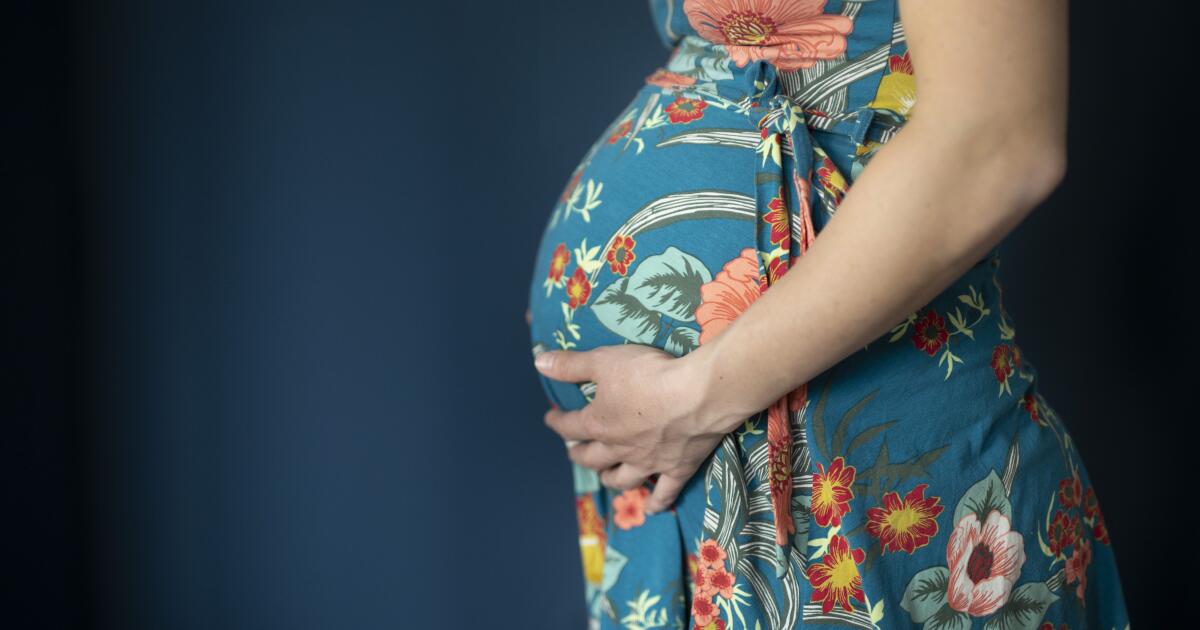
 Science1 week ago
Science1 week agoPregnant? Researchers want you to know something about fluoride
-

 Politics1 week ago
Politics1 week agoAnti-Israel agitators interrupt Blinken Senate testimony, hauled out by Capitol police
















